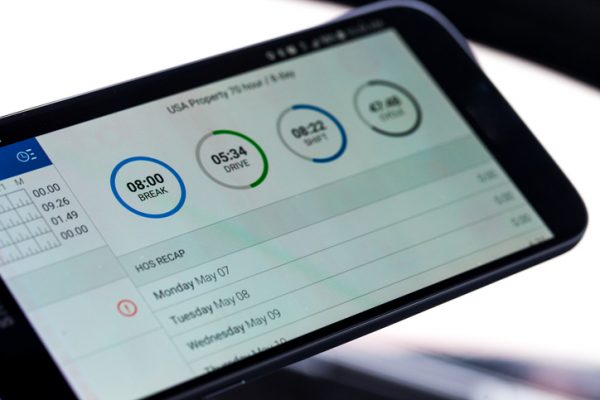Truck fleets using automatic on-board recording devices must move to ELDs

We are now past the December 16, 2019 deadline for all truck drivers to transition to electronic logging devices (ELDs). The Federal Motor Carrier Safety Administration (FMCSA) established the dadline. While ELD rule went into effect two years ago, this deadline was set for fleets using automatic on-board recording devices (AOBRD).
AOBRDs function similarly to ELDs. According to Jeremy Kirkpatrick, vice president of advocacy communications for American Trucking Associations, “AOBRDs function similarly to ELDs but might not meet all of the functional parameters defined in the ELD rule.”
According to the FMCSA, ELDs monitor when a truck motor is running, when the truck is in motion, and how many miles are driven. Law enforcement can currently view a truck driver's hours of service by an ELD printout. They will be able to retrieve ELD data electronically in the future.
How does the new ELD rule work?
The federal ELD requirement applies to a broad range of commercial trucks. More specifically, it applies to trucks used for interstate commerce. The criteria include weighing 10,001 pounds or more (which includes cargo load) and transporting hazardous materials in a quantity that requires placards.
Historically, truck drivers would log more miles in order to earn more money. They would sometimes drive beyond the federal limit of 11 hours on the road and falsify records on paper logs. Truckers who drove for more than 11 hours in a single day were often at risk of drowsy driving. Many of them caused serious crashes after dozing off behind the wheel. The FMCSA established the ELD rule to prevent this from happening.
"It was easy to cheat the system, and it was harder to get caught. Now that all trucks are converting to electronic logs, you can’t cheat,” said one truck driver.
Here's how the federal hours-of-service (HOS) rule works:
- Truckers can to work up to 14 hours, but can only drive up to 11 hours within that period.
- Truckers must be off duty for 10 or more consecutive hours between 14-hour shifts.
Will we see a reduction in truck accidents?
Approximately 1.19 percent of truck driver inspections resulted in HOS regulations in December 2017. As of July 2019, HOS violations fell to 0.55 percent.
A 2014 study commissioned by the FMCSA found that fleets equipped with ELDs had 11.7 percent fewer crashes than those without them. In addition, they saw a 50 percent reduction in HOS violations. ELDs were optional at that time.
In 2017, truck crash fatalities were at a 29-year high, according to the National Highway Traffic Safety Administration.
Whether or not we'll see a reduction in truck crashes remains to be seen. There are several other factors that can lead to crashes, including distracted driving, impaired driving, speeding, and aggressive driving. Despite the HOS and ELD rules, truckers may still get behind the wheel while drowsy. This happens when truck drivers receive inadequate enough sleep while off duty. Drug and alcohol use can also be a factor.
If you or a loved one was hurt in a truck crash, you have the right to take legal action. The attorneys at Recht Law Offices are dedicated to serving injured motorists in West Virginia, Pennsylvania, and Ohio. Contact us online today to schedule your free case evaluation with our legal team.
